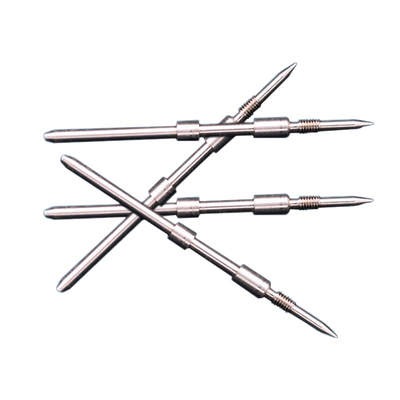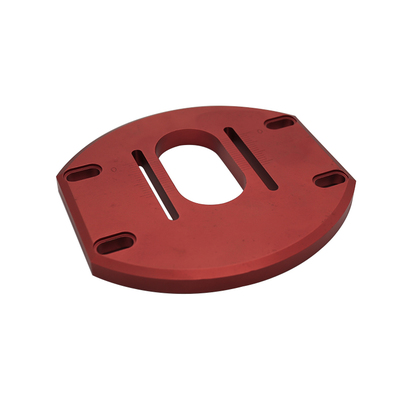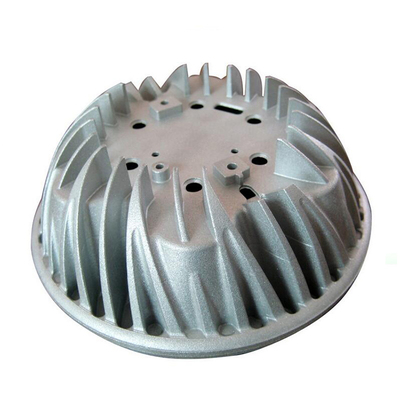How ToTreat This Round Of Non-Ferrous Metal Price Increase?
Since the beginning of this year, the price of non-ferrous metals has risen sharply. The most important factor is that the previous price has dropped too much, and the median cost has generally fallen below the median cost. Therefore, there is an objective requirement for upward restoration. On the other hand, there is no lack of speculative capital in the price increase of non-ferrous metals, which has caused prices to rise too fast and excessively, which has an adverse effect on China's economy. To this end, it is necessary to strengthen market operation supervision and focus on curbing speculative bubbles. Of course, this does not mean a complete suppression of the non-ferrous metals and bulk commodity markets, or even the tightening of China’s monetary policy, which undermines the primary objective of economic growth.

1. This round of price increases is a reasonable return
Since the beginning of this year, the country's non-ferrous metal prices have risen sharply. Market monitoring data shows that in April 2016, the non-ferrous metals category in the National Commodity Price Index (CCPI) rose 8.1% from the beginning of this year. After entering May, the national non-ferrous metal prices continued to run at a high level. Among the important non-ferrous metal varieties, compared with the lows of the third quarter of last year in early May of this year, the main contract price of domestic copper futures rose by about 15%, the price of nickel rose by about 16%, and the price of aluminum rose by about 30%. The domestic tungsten concentrate price has rebounded since the end of December last year, and the price increase is now close to 30%. The prices of other non-ferrous metals and smelting raw materials have also risen to varying degrees. It is expected that the probability that the average price of major non-ferrous metals across the country will be higher than the previous year's level this year will become greater and greater, so the forecast view of last December remains unchanged.
Although this round of non-ferrous metal prices rose somewhat violently, overall, it is still a reasonable return. There are two main reasons:
- - First, the price rebounded from an ultra-low level. The most important factor driving this round of non-ferrous metal prices is that the previous price has dropped too much, generally falling below the median cost, causing the profits of related companies to shrink sharply, and even serious losses. According to statistics, in 2015, the national non-ferrous metal industry realized a profit decline of 15%. Among them, the profit of mining enterprises fell by 25%, and the profit of smelting enterprises fell by 35%. In this case, the relevant companies can only reduce investment and output, thereby contributing to an improvement in the relationship between supply and demand, and triggering changes in risk appetite under the low price of speculative capital. In the first quarter of this year, the national output of 10 non-ferrous metals was 12.06 million tons, down 0.4% year-on-year, and the growth rate dropped 8.1 percentage points from the same period last year. Among them, the output of electrolytic aluminum fell by 2%, and the growth rate dropped by 9.4%; the output of copper increased by 8.5%, a drop of 5.9%; the output of zinc fell 1%, a drop of 15.4%. At the same time, some high-cost mining and energy companies around the world have suffered serious losses due to the price collapse, and have withdrawn from the market one after another. The related production capacity investment has dropped rapidly, and finally a repair request for an upward sales price has been generated. After all, the sales price of the above-mentioned commodities cannot be lower than the cost for a long time, and the "cabbage price" cannot always be sold. It can be seen that the value law of the market economy requires the price of non-ferrous metals to return to a reasonable level.
- - Second, it is still relatively low in history. Although the price of non-ferrous metals has risen sharply this year, it is still down compared to the same period last year. Market monitoring data shows that in the first quarter of this year, copper prices in the domestic market fell by 14.7% year-on-year, aluminum prices fell by 14.5%, and zinc prices fell by 16.2%. Compared with the historical high point in previous years, it has been or almost cut in half. Therefore, it cannot be concluded that prices have risen too much.
2. Too fast and excessive price increases are detrimental to China's economy
It is worth noting that although this round of non-ferrous metal price increases is a reasonable return in terms of the nature of its main driving force and is an objective requirement of the law of market economic value, there is still no lack of speculative capital fueling the flames. If it is allowed to stir up too many bubbles, causing the price of non-ferrous metals to rise too fast and too much, it will have an adverse effect on the Chinese economy:
- - One is to curb China's foreign trade surplus dividend. For a period of time, the prices of non-ferrous metals and other commodities in the international market have continued to be sluggish, which has saved China a large amount of import costs and generated a large foreign trade surplus. This is an important factor in the sharp slowdown in China's foreign trade exports but the foreign trade still maintains a surplus. China is the world's largest non-ferrous metal importing country, and the country's non-ferrous metal imports continued to grow strongly in the first quarter of this year. Among them, the import volume of copper and copper materials was 1.43 million tons, a year-on-year increase of 30.1%; the import volume of alumina was 1.24 million tons, an increase of 32.9%; the import volume of copper ore and concentrates was 4 million tons, an increase of 34%. The import value of the above-mentioned commodities is about 12.2 billion U.S. dollars. Calculated based on an average price drop of 15%, nearly 2 billion U.S. dollars in import costs will be saved. If the current and future non-ferrous metal prices in the international market rise too fast or too much due to speculation, this kind of dividends will be significantly reduced, weakening China's foreign exchange reserves and increasing pressure on the devaluation of the renminbi.
- - The second is to increase domestic price costs. China is also the world's largest consumer of non-ferrous metals, and various non-ferrous metals constitute China's important raw material costs. Excessive and more increases in the price of non-ferrous metals will increase the cost of investment products and raw materials for industrial and agricultural production, directly or indirectly increase various costs, and thus generate an upward push for China's price level.
- - The third is to impact structural reforms on the supply side. At this stage, the excess capacity of non-ferrous metals nationwide is still huge. As its sales prices return to above the median cost line and the profitability of companies is rapidly improving, relevant companies must also actively increase and resume production, and various investments will also come back. This is unstoppable. According to relevant information, currently only the electrolytic aluminum industry has about 700,000 tons of production capacity ready to be put into operation in the near future. The rapid release of excess production capacity of non-ferrous metals and increased investment in production capacity will inevitably impact the reform of the supply-side structure of related industries.
- - The fourth is to generate future market risks. The price of non-ferrous metals has risen too fast, the rate of increase is too large, and the reasonable price level determined by the supply and demand relationship of the real economy is too much, that is, it is pregnant with great fluctuations in the future market conditions. It can be said that the greater the price increase today, the better the profitability, and the higher the company's labor rate, the greater the pressure on the market to pull back in the future. And this kind of commodity risk will spill over through multiple channels, transforming investment risks, financial risks, oversupply risks, market confidence risks and other aspects.
- - The fifth is to reduce the space for macro-control. Because of the above-mentioned market risks and negative shocks in many aspects, especially the price and cost input factors that have been caused to turn into an upward channel, the worries in the future may compress the room for China's macro-control, including whether it can continue to cut the RRR and interest rates? Whether we can increase investment and whether we can continue to cut taxes, etc., still need to continue to be observed.
Since the current and future non-ferrous metal prices are rising too fast and excessively due to vigorous speculation, which is not conducive to the Chinese economy, we need to strengthen the supervision of the non-ferrous metal market while maintaining stable economic growth, especially to curb speculation. Hype the bubble to prevent it from deviating too quickly and too much from a reasonable level. Now that domestic regulatory authorities have taken action, relevant commodity futures exchanges have successively introduced regulatory and cooling measures, such as increasing transaction fees, increasing margin, and cracking down on high-frequency trading. These are all very necessary. Of course, strengthening management can only target speculative bubbles, and it does not mean that the non-ferrous metal market and enterprises will be fully suppressed, or even tightening of China's monetary policy. This practice is actually to choke on food, throwing out "children and dirty water", and ultimately undermine the first goal of stable economic growth.
Link to this article :How ToTreat This Round Of Non-Ferrous Metal Price Increase?
 Sheet metal, Copper Milling, carbon steel,online laser cutting service, 3D printing, precision CNC machining services for heavy equipment, construction, agriculture and hydraulic industries. Suitable for plastics and rare alloys machining. It can turn parts up to 15.7 inches in diameter. Processes include swiss machining,broaching, turning, milling, boring and threading. It also provides metal polishing, painting, surface grinding and shaft straightening services. The production range(include aluminum die casting and zinc die casting) is up to 50,000 pieces. Suitable for screw, coupling, bearing, pump, gearbox housing, drum dryer and rotary feed valve applications.PTJ will strategize with you to provide the most cost-effective services to help you reach your target,Welcome to Contact us ( [email protected] ) directly for your new project.
Sheet metal, Copper Milling, carbon steel,online laser cutting service, 3D printing, precision CNC machining services for heavy equipment, construction, agriculture and hydraulic industries. Suitable for plastics and rare alloys machining. It can turn parts up to 15.7 inches in diameter. Processes include swiss machining,broaching, turning, milling, boring and threading. It also provides metal polishing, painting, surface grinding and shaft straightening services. The production range(include aluminum die casting and zinc die casting) is up to 50,000 pieces. Suitable for screw, coupling, bearing, pump, gearbox housing, drum dryer and rotary feed valve applications.PTJ will strategize with you to provide the most cost-effective services to help you reach your target,Welcome to Contact us ( [email protected] ) directly for your new project.

- 5 Axis Machining
- Cnc Milling
- Cnc Turning
- Machining Industries
- Machining Process
- Surface Treatment
- Metal Machining
- Plastic Machining
- Powder Metallurgy Mold
- Die Casting
- Parts Gallery
- Auto Metal Parts
- Machinery Parts
- LED Heatsink
- Building Parts
- Mobile Parts
- Medical Parts
- Electronic Parts
- Tailored Machining
- Bicycle Parts
- Aluminum Machining
- Titanium Machining
- Stainless Steel Machining
- Copper Machining
- Brass Machining
- Super Alloy Machining
- Peek Machining
- UHMW Machining
- Unilate Machining
- PA6 Machining
- PPS Machining
- Teflon Machining
- Inconel Machining
- Tool Steel Machining
- More Material





